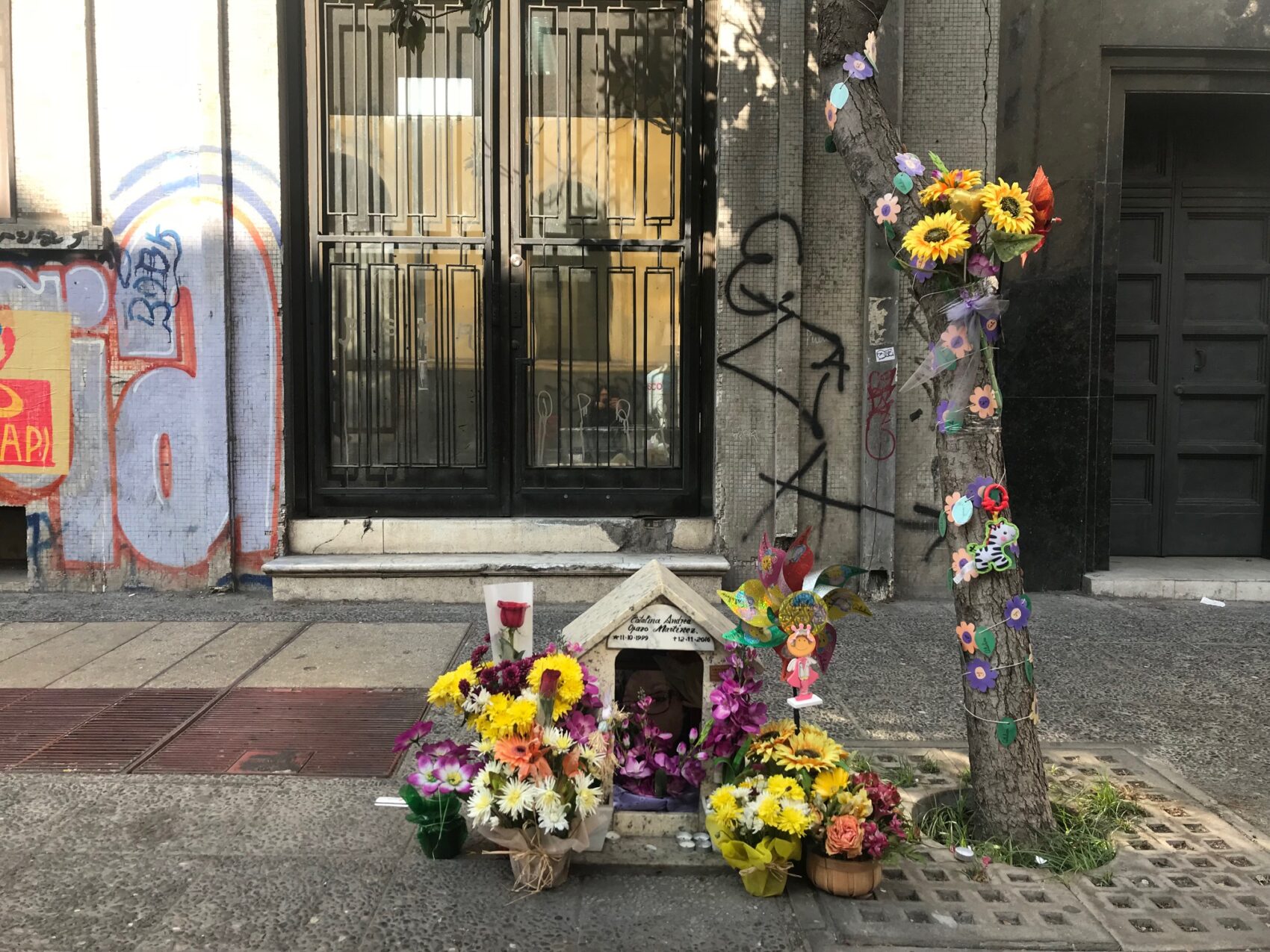Iglesias de bolsillo
Quienquiera que se pasee por las calles chilenas, ocasionalmente verá a los costados unas diminutas casuchas de cemento o latón. Se les conoce como “animitas”, y aparecen en los lugares en que murió alguien producto de un accidente o en circunstancias trágicas. Su propósito inicial era establecer una suerte de comunicación con la persona fallecida, bajo el supuesto de que su alma quedaba rondando en el lugar. Con el tiempo varias se hicieron célebres y se llenaron de velas, adornos y mensajes de agradecimiento, debido a las ayudas sobrenaturales que proporcionan a sus visitantes. Son de alguna manera lugares de recogimiento al alcance de la mano o, si se quiere, iglesias de bolsillo.
A pesar de que están en nuestro folclore hace ya mucho tiempo, en los ultimos años han cobrado un auge particular. Hay más que antes. Las redes sociales tomaron nota de ello: algunos perfiles en Facebook o Instagram se dedican a resaltar su valor estético, mientras que los blogs las ordenan en rankings de popularidad. Además, ahora son más grandes y diversas, añadiendo un énfasis en la personalidad del homenajeado/a y en las circunstancias de su deceso. Cuando se trata de un ciclista, por ejemplo, la casucha se acompaña de una bicicleta forrada en papeles de colores.
La Iglesia mira de reojo estas prácticas, evidentemente politeístas, pero no tiene mucho que hacer. La última visita del papa a Chile estuvo marcada por la apatía general y las acusaciones de abuso sexual contra el clero. Por otro lado, ya en 2015 se hablaba de una crisis de confianza en las instituciones chilenas a raíz de escándalos relacionados con el financiamiento de campañas políticas. Desde entonces la situación no ha hecho más que empeorar. Actualmente se investigan nuevos casos de corrupción en la policía, el ejército y el poder judicial.
La gente necesita creer hoy más que antes, y si el mundo se les presenta poco esperanzador, encontrará por sí misma una vacuna contra el nihilismo.
Kirchen in Taschenformat
Wer in Chile durch die Straßen spaziert, dem begegnen gelegentlich am Gehwegrand winzige Häuschen aus Stein oder Blech. Diese sogenannten „Animitas“ (wörtlich: Seelchen) sind Schreine, die Leute dort errichten, wo jemand aufgrund eines Unfalls oder unter tragischen Umständen ums Leben gekommen ist. Ursprünglich sind sie als eine Art Verbindung zur verstorbenen Person gedacht, da man annimmt, dass deren Seele sich noch an jenem Ort befindet. Einige haben mit der Zeit Bekanntheit erlangt und dort sammeln sich Kerzen, Ziergegenstände und Botschaften zum Dank der Besucher für die Hilfe, die sie dort von übernatürlicher Seite erfahren haben. Es sind in gewisser Weise Orte des Trostes in Griffweite, oder, wenn man so will, Kirchen in Taschenformat.
Obwohl sie seit langem schon Teil unserer Volkstradition sind, erfährt das Phänomen derzeit eine besondere Entwicklung. Es gibt mehr Schreine als je zuvor. In den sozialen Netzwerken ist man auf sie aufmerksam geworden: Einige Profile auf Facebook oder Instagram widmen sich der Hervorhebung ihres ästhetischen Wertes, während in Blogs Rankings zu ihrer Beliebtheit erstellt werden. Heute sind die Häuschen zudem größer und vielgestaltiger und tragen der Persönlichkeit des Menschen, dessen gedacht wird und der Umstände seines Ablebens Rechnung. Handelt es sich beispielsweise um einen Radfahrer, so findet man dabei etwa ein mit buntem Papier umwickeltes Fahrrad.
Die Kirche beäugt diesen offensichtlich polytheistischen Brauch mit Argwohn, kann aber nicht viel ausrichten. Der letzte Papstbesuch in Chile war geprägt von der allgemeinen Apathie und gegen den Klerus gerichteten Anschuldigungen wegen sexuellen Missbrauchs. Andererseits war bereits 2015 die Vertrauenskrise in die chilenischen Institutionen aufgrund der Skandale im Zusammenhang mit der Finanzierung politischer Kampagnen ein großes Thema. Seitdem hat sich die Situation nur verschlimmert. Derzeit werden neue Fälle von Korruption in Polizei, Armee und Justiz untersucht.
Mehr denn je möchten die Menschen heute an etwas glauben können, und wenn die Welt ihnen wenig hoffnungsvoll erscheint, entwickeln sie ihre eigene Art, sich gegen den Nihilismus zu wappnen.
Übersetzung: Lea Hübner
Pocket Churches
Whoever takes a stroll through Chilean streets will occasionally see tiny shacks made of cement and tin along the roadside. They’re known as “animitas,” and they are put up wherever someone died as a result of an accident or under tragic circumstances. It’s initial purpose was to create some sort of communication channel with the deceased, under the supposition that their soul had been wandering that location. Many of them became famous with time, being lit up with candles and filled ornaments and thank-you notes due to the supernatural assistance they had provided their visitors. Somehow, they become a place for introspection within easy reach―or a pocket church, if you will.
Even though they are part of our folklore for quite some time, lately they have reached a particular apex. There are more of them now than ever before. Social media took notice of them. There are Facebook and Instagram profiles dedicated to highlighting their aesthetic value, while bloggers have ranked them according to popularity. Besides, now they’re larger and more diversified, putting some emphasis on the personality of the person being honored and the circumstances of their death. If the deceased was a cyclist, for example, a bicycle covered in colorful paper will be placed by the little shack.
The Church casts a sidelong glance to this practice, since it’s evidently polytheist, but there isn’t much that it can do. The Pope’s last visit to Chile was marred by generalized indifference and sexual abuse accusations against the clergy. On the other hand, back in 2015 people were already talking about the level of distrust in Chilean resolutions in the wake of scandals involving political campaign financing. Since then, the situation has only gotten worse. Nowadays, new corruption cases are being investigated within the police force, the army, and the judiciary.
People are eager to believe in something, now more than ever, and if the world seems a little hopeless lately, we’ll find ourselves a cure to nihilism.
Translation: Rafa Lombardino
Teilen












